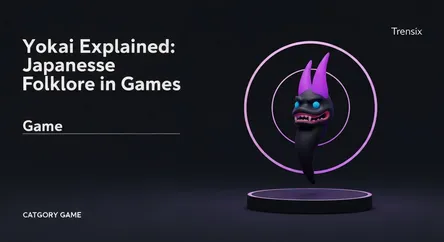Game
Yokai Explained: Japanese Folklore in Games

Explore Yokai, the supernatural monsters from Japanese folklore that have become iconic figures in popular video games like Nioh and Ghostwire: Tokyo.
What is it?
Yokai are a broad class of supernatural monsters, spirits, and demons from Japanese folklore. The term is a catch-all for a vast array of strange and mysterious phenomena, encompassing everything from mischievous animal spirits like the Kitsune (fox) to powerful demons like the Oni and even haunted inanimate objects known as Tsukumogami. These beings can be malevolent, benevolent, or simply tricksters, and their stories have been passed down for centuries through Japanese art, literature, and oral tradition, representing the unknown and the bizarre.
Why is it trending?
Yokai have become a major source of inspiration in the gaming world. Their rich history and incredibly diverse designs provide a deep well for developers creating unique enemies and allies. Games like the Nioh series, Ghostwire: Tokyo, and the Persona franchise heavily feature Yokai, introducing them to a global audience. This trend is fueled by the worldwide popularity of Japanese media, which often draws from this same folklore, creating a feedback loop of interest where fans of one medium seek out the other.
How does it affect people?
For players, Yokai lore enriches the gaming experience by adding cultural depth and authenticity. Instead of fighting generic fantasy monsters, players engage with creatures rooted in real-world mythology, which can spark curiosity and a desire to learn more about Japanese culture. These encounters make game worlds feel more vibrant and unique, blending action and horror with a fascinating history lesson. This connection turns a simple boss fight into a memorable cultural experience, deepening the player's immersion in the game.